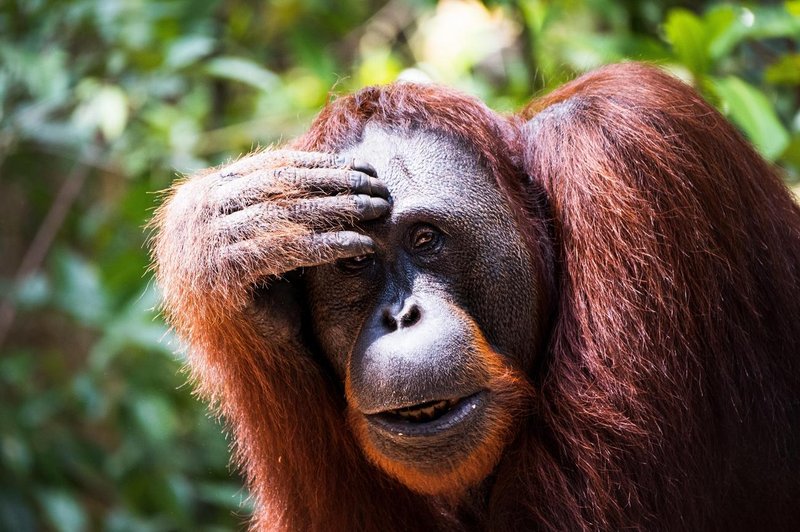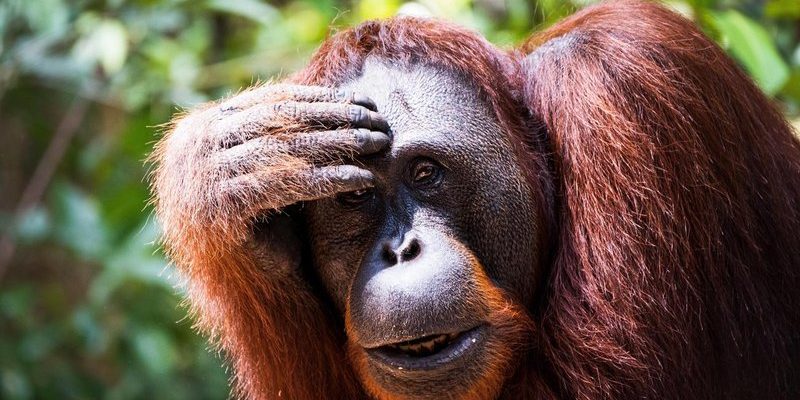
Bornean orangutans, native to the lush rainforests of Borneo, are known for their impressive cognitive abilities. Their smarts often get overshadowed by their adorable appearance, yet they demonstrate behaviors that can rival some human toddlers! From using sticks to extract termites to navigating their environment with remarkable skill, Bornean orangutans show us how intelligence manifests in the animal kingdom. Let’s take a closer look at their cognitive abilities and behaviors that make them truly remarkable.
Understanding Orangutan Intelligence
Orangutans belong to the great ape family, which includes gorillas, chimpanzees, and bonobos. One of the most intriguing aspects of these creatures is their ability to solve problems and adapt to their surroundings. Research shows that Bornean orangutans possess a high level of cognitive flexibility, allowing them to modify their behavior based on past experiences. Here’s the thing: when they encounter a challenge, they often engage in trial and error, which speaks volumes about their problem-solving skills.
For instance, a study found that orangutans can use tools to obtain food, showcasing their understanding of cause and effect. They might grab a sturdy stick, rip off some leaves, and use it to fish out insects from tree bark. This isn’t just simple instinct; it requires planning and understanding—qualities that point to sophisticated cognitive abilities.
Interestingly, they also show signs of self-awareness. Research involving mirrors demonstrated that orangutans can recognize themselves, which is a trait shared by only a handful of species, including humans. This insight into self-awareness reflects their cognitive complexity and gives scientists valuable information about how they perceive the world around them.
Social Learning and Communication
Another notable aspect of Bornean orangutans is their ability to learn from one another. Social learning is crucial for their survival and adaptation. Young orangutans often shadow their mothers, picking up skills and behaviors along the way. This process is vital, especially when learning to use tools or navigate the vast canopies of their forest homes.
Orangutans are also quite vocal. They use a variety of sounds to communicate with each other, such as hoots, grunts, and even soft whimpers. These vocalizations are not just random noises; they convey different messages, whether that’s alerting others to danger or signaling the presence of food. It’s fascinating how they can express themselves and maintain social bonds despite their solitary nature.
You might be wondering how they compare to other intelligent animals, like chimpanzees. While chimpanzees often live in larger groups and exhibit more complex social structures, orangutans have their own unique ways of thriving in a more solitary environment. Their ability to adapt their communication style to their surroundings highlights their intelligence in navigating social interactions.
Tool Use and Innovation
When it comes to tool use, Bornean orangutans shine. They’ve been observed crafting tools for specific purposes, showcasing an impressive level of innovation. Think about it: these animals can bend a branch just right to retrieve honey from a hive or peel off the skin of a fruit to reach its pulp. This ability isn’t merely instinctual; it requires creativity and foresight.
In one study, researchers documented orangutans using leaves as sponges to soak up water or as gloves to avoid thorny branches while climbing. This kind of innovative behavior is a hallmark of intelligent species, and orangutans have it down to an art. Their tool-making skills aren’t just handy; they’re essential for survival in their challenging environments.
Moreover, this tool use doesn’t just happen spontaneously. Orangutans often watch others and replicate the tool-making process, indicating a capacity for cultural transmission. Knowledge about tool use can be passed down through generations, further enhancing their survival strategies and suggesting that these behaviors might vary from one population to another.
Problem-Solving Skills in the Wild
When faced with obstacles, Bornean orangutans show remarkable problem-solving skills. In the wild, they often need to think on their feet to find food, evade predators, and navigate the canopy. For example, if food is out of reach, they might devise a way to create a makeshift bridge using fallen branches or vines, highlighting their ability to strategize effectively.
One particular instance involved researchers setting up tasks where orangutans had to figure out how to access a food reward hidden in a puzzle box. Observations showed that they could assess the situation, manipulate objects, and even combine multiple tools to achieve their goal. This level of reasoning indicates a higher cognitive function, very similar to young children solving puzzles or games.
It’s this problem-solving ability that helps them thrive in the wild. With deforestation and habitat loss putting them at risk, their intelligence becomes even more crucial. Understanding how they think can aid conservation efforts as we find ways to protect their natural environment.
Emotional Intelligence and Empathy
Emotional intelligence is often talked about in humans, but it’s present in Bornean orangutans too. They display a range of emotions—from joy to sadness and even empathy. Observations in the wild show that they form strong bonds with each other, caring for their young and supporting each other through tough times.
For instance, mothers are incredibly nurturing, often carrying their babies for years, teaching them everything they need to survive. When a young orangutan is in distress or anxious, you might find that their mother is right there, offering comfort. This emotional connection is vital for the development of social skills and behaviors.
Interestingly, orangutans can also display behavior that suggests they understand the feelings of others. They might console a distressed companion or help another orangutan retrieve food, which displays a sense of empathy not commonly found in many species. They recognize their peers’ emotional states and respond accordingly, which makes their social interactions even more compelling and complex.
The Impact of Habitat Loss on Cognitive Abilities
Unfortunately, the intelligence and behaviors of Bornean orangutans are under threat. Habitat loss due to logging and palm oil plantations has a profound effect on their cognitive skills and overall well-being. More than just losing their homes, orangutans are being pushed into smaller spaces, which limits their ability to thrive socially and mentally.
In fragmented habitats, their opportunities for social learning, innovation, and emotional interactions are reduced. Fewer young orangutans are learning essential survival skills from their mothers, leading to a decline in both individual and population intelligence over time. This is alarming, as it can create a vicious cycle that further threatens their survival.
Moreover, as their environments change, these intelligent animals must adapt quickly. Without the chance to innovate and solve new problems, they may struggle to survive. The cognitive abilities we’ve explored are vital for their future, and any change in their habitat can drastically impact their survival.
Why Understanding Bornean Orangutan Intelligence Matters
Understanding the cognitive abilities and behaviors of Bornean orangutans is crucial not just for scientific insight but also for conservation efforts. Their intelligence gives us a unique perspective on their needs and challenges, which can influence how we protect these incredible creatures.
By appreciating their problem-solving skills, tool use, and emotional depth, we can foster greater empathy toward their plight. This awareness can lead to actions that support habitat preservation and sustainable practices, ensuring that future generations of orangutans can thrive in the wild.
You might find it fascinating that by studying the intelligence of Bornean orangutans, we also learn more about ourselves. The similarities between human and orangutan cognition remind us of the fragile connections we share with nature. Protecting these intelligent creatures not only benefits them but also enriches our understanding of our place in the world.
In conclusion, the Bornean orangutan is more than just a charismatic creature; it’s a symbol of intelligence and adaptability in the animal kingdom. Their cognitive abilities and behaviors are complex and beautiful, reflecting the rich tapestry of life on Earth. Let’s continue to champion their cause and work towards a future where these amazing beings can thrive in their natural habitat.

